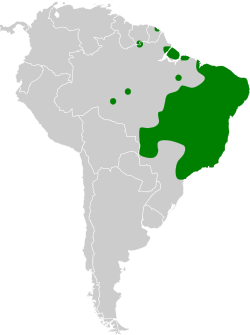| Copper seedeater | |
|---|---|
 | |
| Male at Mogi das Cruzes, São Paulo State, Brazil | |
 | |
| A young female at Mogi das Cruzes, São Paulo State, Brazil | |
| Scientific classification | |
| Kingdom: | Animalia |
| Phylum: | Chordata |
| Class: | Aves |
| Order: | Passeriformes |
| Family: | Thraupidae |
| Genus: | Sporophila |
| Species: | S. bouvreuil |
| Binomial name | |
| Sporophila bouvreuil (Statius Müller, 1776) | |
 | |
The copper seedeater (Sporophila bouvreuil) is a species of bird in the family Thraupidae. It was lumped with the pearly-bellied seedeater (S. pileata) and known together as the capped seedeater before being split in February 2012.
It is found in Brazil and Suriname. Its natural habitat is dry savanna.
